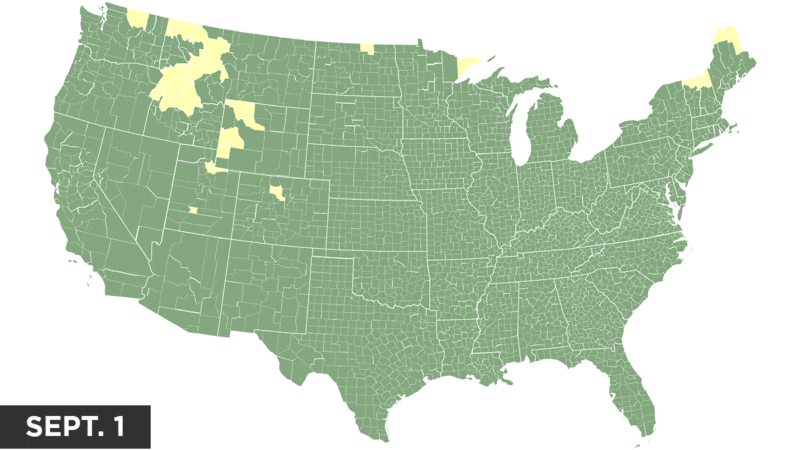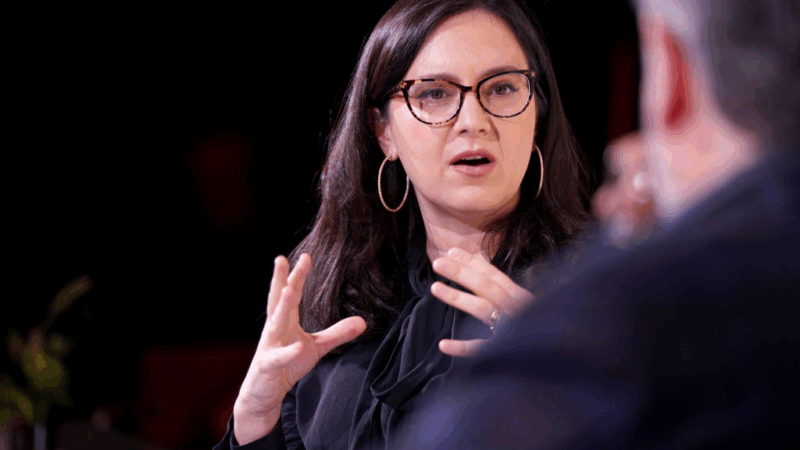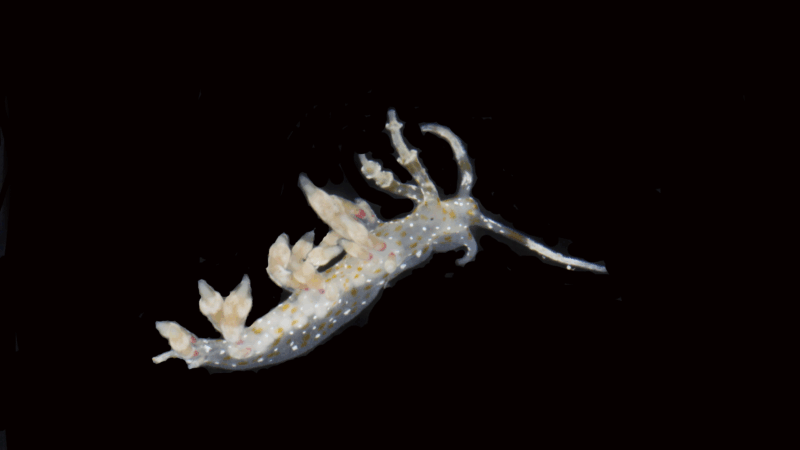Climate change is delaying peak fall foliage. Here’s what to expect this year
It’s officially fall in the Northern Hemisphere, which means bright, beautiful foliage isn’t far behind.
Parts of the U.S. will soon start to see — if they haven’t already — leaves and shrubs trade their green hues for vibrant shades of orange, yellow and red as the days get shorter and temperatures get chillier.
“It’s a really cool process that we get to watch, that trees are preparing for winter,” says Alexandra Kosiba, extension assistant professor of forestry at the University of Vermont.
Trees shed their leaves in order to store and recycle valuable nutrients (in their trunks and branches) before winter’s ice and snow can rip them off. As temperatures drop, chlorophyll — the pigment that makes leaves appear green — starts breaking down, revealing the yellows and oranges they’ve had all along.
Leaves typically start to change color in the northernmost states by mid-September, peaking around the end of the month and later farther south.
This year, Almanac predicts that leaves in northern areas of the West and Midwest will peak by Oct. 4, while much of New England and the Pacific Northwest will be at or near peak fall color by Oct. 11, followed by the Blue Ridge Mountains.
Multiple fall foliage maps — including from Explore Fall, TheSmokyMountains.com and Almanac — do their best to estimate when leaves will change and colors will peak across the country, a helpful resource for leaf-peepers and autumn enthusiasts hoping to make the most of the season.

But projecting peak foliage isn’t an exact science. The timing and onset of the color change vary by location, based on factors like temperature, elevation, rainfall and pests.
“No one can predict fall foliage — we just have to sort of let it unfold,” Kosiba says. “We can use research and monitoring to inform what we think is going to happen, but it’s really this incredibly unique process that happens, and we get to experience it.”
Kosiba says online trackers can be helpful for understanding long-term patterns, though they don’t capture local nuances. She recommends that people monitor updates from their state’s forest health agency for real-time observations in their area — and prepare to do a little local exploring this fall, even if they’re not planning a full-fledged fall road trip.
“If you’re in a location … and it’s looking a little dull, go a little further afield, go to a different location, and you might find some really good fall foliage developed,” she says.
Climate change is delaying color change

Researchers have found that weather conditions in previous seasons can also affect the timing and intensity of leaf color changes.
A tree’s recent past can dictate how vibrant or muted its leaves are in the fall. And, in a colorful contradiction, warmer spring temperatures can trigger trees to start the fall foliage process earlier, while warmer fall temperatures can delay the onset of color changes.
“In general, we are seeing fall foliage is occurring later than it has historically, based on global climate change,” Kosiba says. “But every year can be really different depending on the spring, summer and fall conditions that occur.”
Kosiba says that climate change has delayed fall foliage by about a week since experts started monitoring it in the mid-20th century — around the time that “leaf-peeping” entered the modern lexicon.
These days, fall foliage-related tourism generates some $8 billion in New England annually, according to the National Park Service, with visitors flocking to towns, mountain ranges and national parks to take in the views.
Peak foliage usually lasts seven to 10 days, according to Almanac, though weather conditions can make a big difference. Kosiba says wind and heavy rain can cut a fall foliage season short, while the idyllic combination of warm, sunny days and cool nights can significantly prolong it.
Making the most of peak foliage

New England is currently experiencing drought conditions — despite a wet spring and early summer — which is causing leaves in some places to turn brown and shrivel up.
But in other cases, Kosiba says, minor drought can actually make some leaves turn an even deeper red.
Kosiba says parts of New England, like where she is in Vermont, are seeing the onset of fall foliage about a week earlier than expected. But the region’s varied topography and rainfall patterns make it hard to paint with a broad brush.
“So we’ll see in some places, where the soil is very shallow and rocky, that we are seeing early leaf drop,” she says. “And then on the other side of a hill very close to that location, we might see an area that’s really green and hasn’t even started the fall foliage process.”
If you’re worried about missing peak Northeast foliage, or planning a last-minute leaf-peeping trip, Kosiba’s advice is “just keep driving south.” Southern New England and parts of the Mid-Atlantic may not see their colors peak until late October or even November.
“My thought personally, because I love the fall foliage season, is that it’s always good somewhere,” she says. “So if it seems a little brown where you are, go a little bit to a different location.”
Even if you’re staying local, there are a few tricks you can try to get a more colorful view. Kosiba recommends going to a higher elevation, especially if you’re in a dry place. Wetlands can be a great place to look for fall foliage, especially for deep reds. And don’t forget to look down.
“We often think of fall foliage on trees, but a lot of our shrubs in our forests, even our ferns, turn really nice colors,” she says, mentioning blueberry shrubs, viburnums and understory plants, a category that includes ferns and mosses. “There’s usually something good to see somewhere.”
Vance refuses to set red lines over bigotry at Turning Point USA’s convention
Vice President JD Vance acknowledged the controversies that dominated the Turning Point conference, but he did not define any boundaries for the conservative movement besides patriotism.
CBS News chief Bari Weiss pulls ’60 Minutes’ story, sparking outcry
CBS News Editor-in-Chief Bari Weiss pulled a 60 Minutes segment on allegations of abuses at an El Salvador detention center where the Trump administration sent hundreds of Venezuelan migrants.
Lawmakers threaten Attorney General Bondi with contempt over incomplete Epstein files
The Justice Department is defending its initial release of documents related to sex offender Jeffrey Epstein, saying lawyers are still going through them to ensure victims are protected.
How a power outage in Colorado caused U.S. official time be 4.8 microseconds off
Officials said the error is likely be too minute for the general public to clock it, but it could affect applications such as critical infrastructure, telecommunications and GPS signals.
Scientists say they have discovered 20 new species deep in the Pacific Ocean
Researchers retrieved reef monitoring devices that had been placed in deep coral reefs in Guam. The devices were placed up to 330 feet below the surface.
Shopping for pricy ACA health plans? Some cheaper options come with trade-offs
Without a fix from Congress, costs for many people who buy health care on the Affordable Care Act marketplace have gone up. Here's what's to know about cheaper choices — and pitfalls to be aware of.








